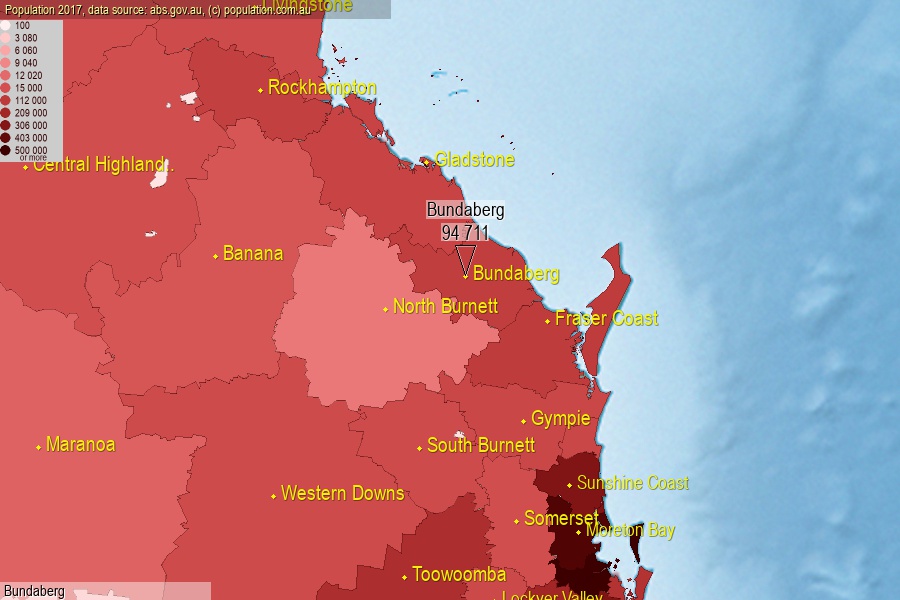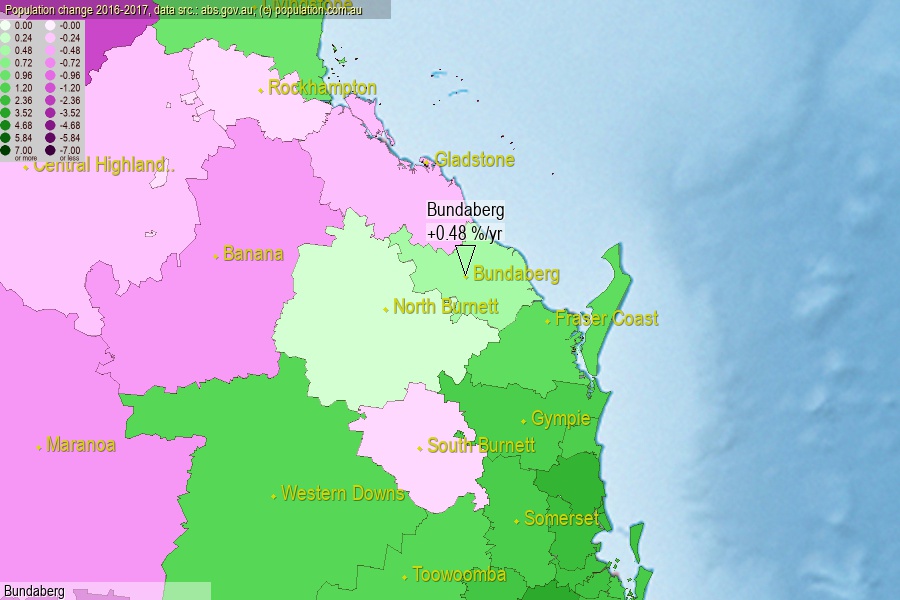 population.com.au
population.com.auLast official estimated population of Bundaberg Regional Council (as Local Government Area) was 94 711 people (on 2017-06-30)[2]. This was 0.38% of total Australian population and 1.898% of QLD population. Area of Bundaberg is 6 432.70 km², in this year population density was 14.72 p/km² . If population growth rate would be same as in period 2016-2017 (+0.48%/yr), Bundaberg population in 2025 would be 98 431. [0]



Click to enlarge. Bundaberg is located in the center of the images.
Population [people], population density [p./km²] and population change [%/year] [2]
[2001-2002] +1.47 %/Y
[2002-2003] +1.26 %/Y
[2003-2004] +1.80 %/Y
[2004-2005] +2.33 %/Y
[2005-2006] +2.34 %/Y
[2006-2007] +1.97 %/Y
[2007-2008] +2.44 %/Y
[2008-2009] +1.96 %/Y
[2009-2010] +1.18 %/Y
[2010-2011] +0.73 %/Y
[2011-2012] +1.34 %/Y
[2012-2013] +0.60 %/Y
[2013-2014] +0.19 %/Y
[2014-2015] +0.00 %/Y
[2015-2016] +0.24 %/Y
[2016-2017] +0.48 %/Y
[0] Calculated with linear interpolation from officially estimated population
[1] Read more about LGA and Australian Statistical Geography Standard (ASGS) on abs.gov.au
[2] Population data from Australian Bureau of Statistics (Population and density: 2017; change: 2016-2017)
[3] Digital Boundaries: Australian Statistical Geography Standard (ASGS) 2016.